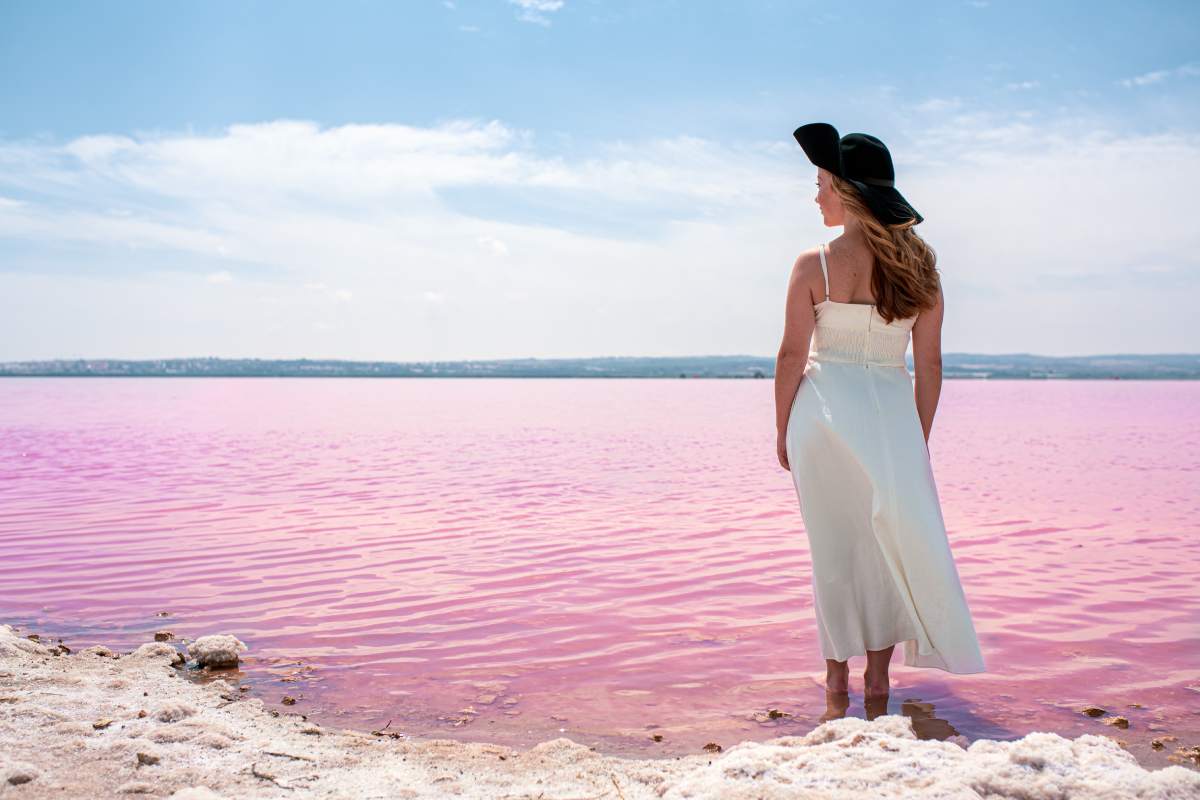Australia is home to some of the most breathtaking natural wonders, but few are as unique and captivating as its pink lakes. These lakes, with their striking bubblegum or pastel hues, have attracted visitors from around the world, eager to witness this natural phenomenon.
But what exactly causes these lakes to turn pink, and is it safe to swim in them?
This article delves into the science behind the pink lakes of Australia and explores whether they’re swimmable, focusing on some of the most famous lakes like Lake Hillier, Hutt Lagoon, and others.
The Pink Lakes of Australia: A Natural Phenomenon
Australia has several pink lakes scattered across different regions, each offering a slightly different shade of pink. These lakes are incredibly picturesque, often surrounded by beautiful landscapes, making them popular tourist attractions. The most famous among them are:
- Lake Hillier (Middle Island, Western Australia)
- Hutt Lagoon (Port Gregory, Western Australia)
- Pink Lake (Esperance, Western Australia)
- Lake Eyre (South Australia)
Each of these lakes has its own unique charm and pinkish tint, but the underlying cause for their vibrant colour is relatively similar.
Why Are These Lakes Pink?
The pink hue of these lakes is a result of natural processes involving the concentration of certain microorganisms and chemical reactions that occur in highly saline environments. Here are the main factors contributing to the pink colour:
1. Dunaliella Salina Algae
The primary cause of the pink colour in most Australian pink lakes is a type of algae called Dunaliella salina. This algae thrives in salty environments and produces carotenoids, a type of pigment, particularly beta-carotene, which gives the water its pink hue. Beta-carotene is also found in carrots and is a precursor of vitamin A, known for its strong pigmentation properties.
When the concentration of Dunaliella salina increases, especially during periods of high salinity and intense sunlight, the water turns a more intense shade of pink. The algae’s adaptation to these extreme environments is the key to the lake’s vivid colour.
2. Halobacteria
Another contributor to the pink colour is Halobacteria, a type of archaea that also thrives in saline conditions. These microorganisms contain a pigment called bacteriorhodopsin, which is pinkish-red and helps them photosynthesize in environments with little oxygen. The presence of Halobacteria, in combination with the algae, intensifies the pink colour.
3. Salt Crystals
The high salt content in these lakes also plays a role in their pinkish hue. Salt crystals, when combined with algae and bacteria, can enhance the lake’s overall colour. As water evaporates and the salt concentration increases, the pink colour becomes more pronounced.
4. Environmental Factors
Temperature, sunlight, and water levels are important factors that affect the colour intensity. During warmer months, the concentration of salt and algae tends to rise, causing the lakes to appear even pinker. In contrast, during cooler seasons or periods of high rainfall, the colour may fade slightly due to dilution or lower algae activity.
Famous Pink Lakes in Australia
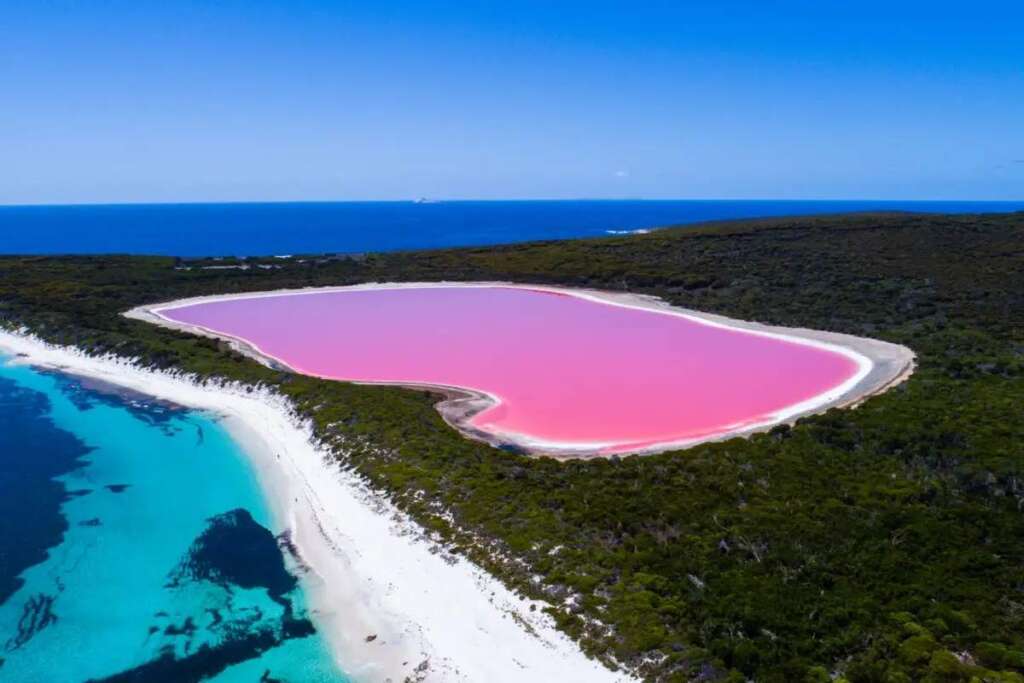
1. Lake Hillier
Perhaps the most famous of Australia’s pink lakes, Lake Hillier is located on Middle Island off the southern coast of Western Australia. It is renowned for its consistently vibrant pink colour, which can be observed year-round. Lake Hillier’s pink hue is especially striking when seen from above, as the lake is surrounded by dense forest and contrasted by the deep blue ocean nearby.
Despite its high salinity, the lake is completely safe to swim in, though access is restricted due to its location on a protected island. Most visitors experience the lake via scenic flights.
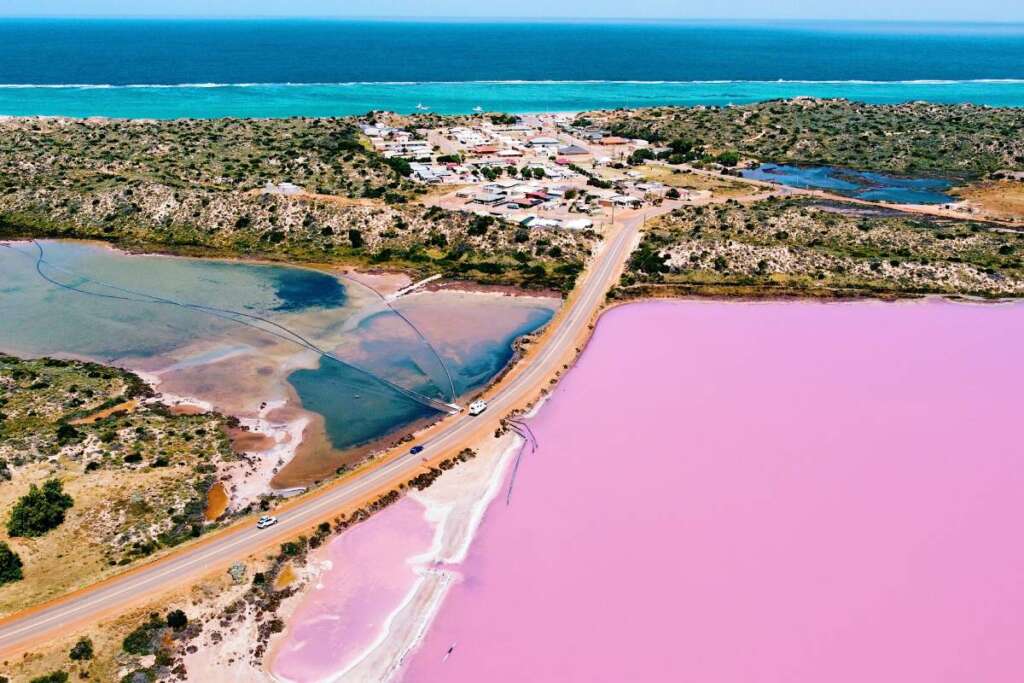
2. Hutt Lagoon
Hutt Lagoon, located near the town of Port Gregory in Western Australia, is another famous pink lake. Its colour varies from pink to red depending on the time of day and season. This lake is more accessible than Lake Hillier, and visitors can drive up to its shores to take in the stunning views. Hutt Lagoon’s striking colour has made it a popular spot for photographers and tourists alike.
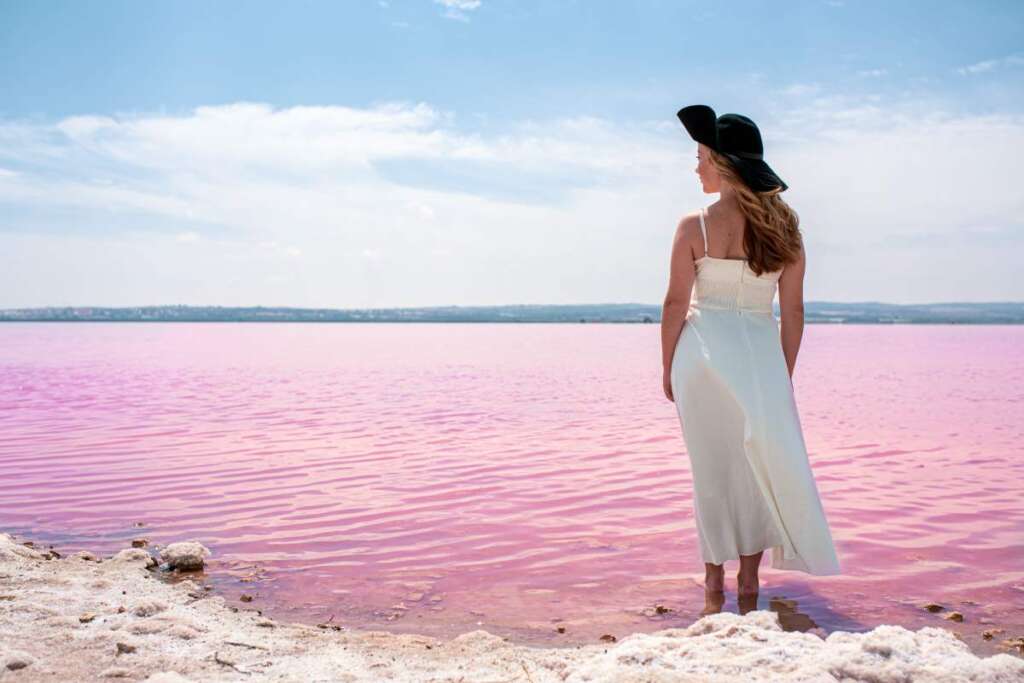
3. Pink Lake (Esperance)
Though it used to be as vibrant as Lake Hillier, Pink Lake near the town of Esperance has lost its pink colour in recent years due to environmental changes, including a decrease in salinity caused by human intervention. However, efforts are being made to restore the lake’s former glory.
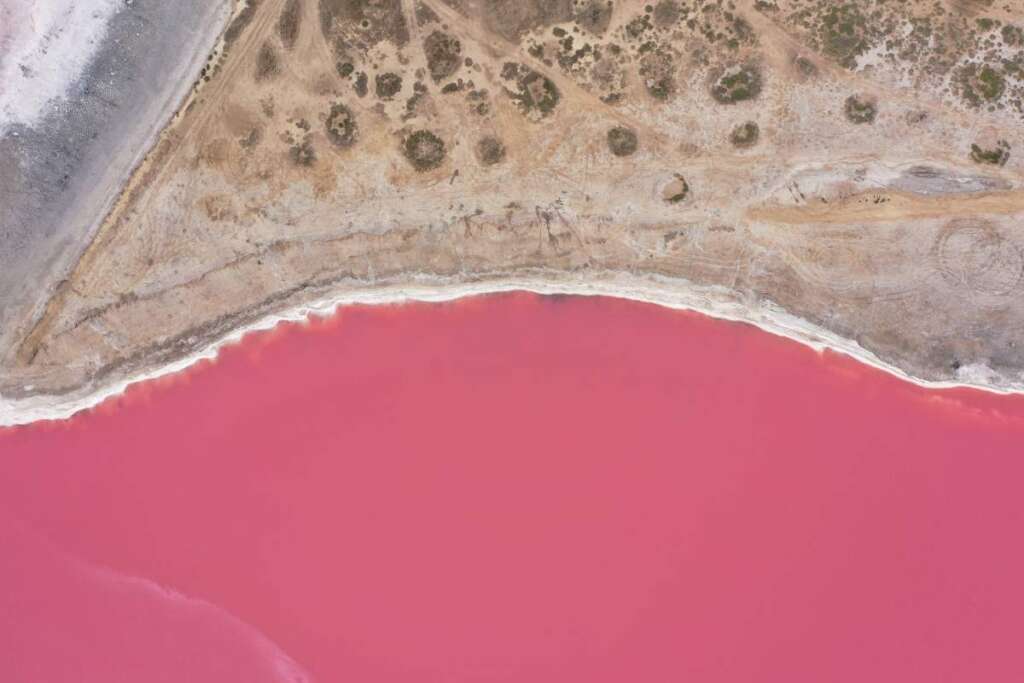
4. Lake Eyre
Lake Eyre in South Australia is the largest salt lake in the country and turns pink under the right conditions. The lake is mostly dry, but after periods of heavy rainfall, the water can appear pink, depending on the concentration of Dunaliella salina and salt levels. Lake Eyre is an ephemeral lake, so its pink colour is not permanent, but when it does occur, it is a sight to behold.
Can You Swim in Australia’s Pink Lakes?
While the pink lakes are undoubtedly beautiful and unique, the question arises: can you swim in them? The answer depends on the specific lake you’re interested in.
1. Lake Hillier
Swimming in Lake Hillier is technically safe due to the non-toxic nature of the algae and bacteria present in the water. However, access to the lake is restricted, and it is located on a protected island. This means that while the lake’s water poses no harm to swimmers, there are very few opportunities to take a dip.
Most visitors experience Lake Hillier from the air, and only a select few with special permits can visit up close.
2. Hutt Lagoon
Swimming in Hutt Lagoon is not officially prohibited, but it is not a common activity due to the lake’s high salinity levels and the sometimes shallow water depth. The lake’s pink colour also varies with the time of day and weather, making it a visual experience more than a recreational one. Visitors are encouraged to enjoy the lake’s beauty from the shore and take photographs, but there is no developed infrastructure for swimming.
3. Pink Lake (Esperance)
Due to its lost pink colour, Pink Lake is more of a natural wonder with a historical appeal. While it is not recommended to swim here, visitors often explore its surroundings to learn about its ecological history.
4. Lake Eyre
Given the temporary nature of Lake Eyre’s water and the fact that it is usually a dry salt pan, swimming here is not a common activity. During periods of water accumulation, the lake can be dangerous due to its depth variability and the remote, harsh environment. Visitors are advised to approach with caution and refrain from swimming.
Conclusion: Should You Swim in a Pink Lake?
Australia’s pink lakes are incredible natural phenomena, drawing travellers from far and wide to witness their vibrant colours. While swimming in some of these lakes, like Lake Hillier and Hutt Lagoon, is possible in theory, it’s not the primary draw for visitors. The pink lakes are better suited for visual appreciation, photography, and learning about their unique ecosystems.
Whether you decide to visit these lakes for their beauty or scientific curiosity, they remain a testament to nature’s ability to surprise and captivate us. Just remember to respect these natural wonders by adhering to local regulations and preserving their pristine beauty for future generations.

